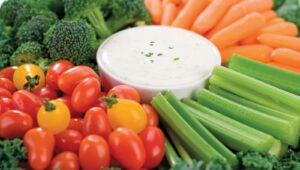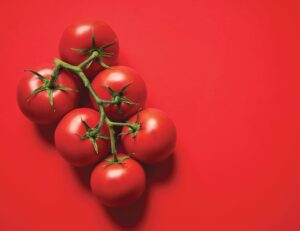Most of my readers are on some sort of specialized diet due to a health condition. There are recipes available online for most diets, including low carb, ketogenic, gluten-free, dairy-free, reduced sugar, and others. There are even specialized magazines for paleo or allergy-free diets. Sometimes you may want to make a special family recipe or favorite treat that includes one or more ingredients you can no longer have. Over the years I have learned some techniques for adapting standard recipes to suit specialized diets. Follow my process as I adapt an online muffin recipe to suit my own dietary needs.
Use Healthy Ingredients
Each time I make a recipe I try to use the healthiest version of each ingredient. For example, I use organic eggs or omega-3 eggs when eggs are called for. I use organic cane sugar or another healthy sweetener instead of regular sugar, which is made from GMO beets. Be aware that if you adjust sweeteners, you might need to adjust other things in the recipe. For example, if you use a liquid sweetener such as honey or maple syrup instead of regular sugar, you might need to reduce one of the other liquids in the recipe a bit. When I made this muffin recipe, I used organic cinnamon, apples and pears, and omega-3 eggs. I also used melted coconut oil instead of the much more inflammatory vegetable oil.
Reduce Sugar in the Recipe
When making a sweet dessert or muffin recipe, you can usually reduce the amount of sugar from the original. If this is a baked good, you may have to experiment with the amount so that it does not affect the texture or cooking time. In this muffin recipe, I reduced the sugar by half, to 1/4 cup, and also used coconut sugar instead of regular sugar. Coconut sugar tastes more like brown sugar and is appropriate for this type of muffin recipe. In some other recipes, it might be appropriate to use Swerve, which is a cup-for-cup sugar substitute. In other cases, using organic cane sugar makes the result taste most like the original recipe.
Substitute Ingredients
I have many food sensitivities and almost always either need to substitute or leave out ingredients when I cook. For herbs and spices, it is easy to either substitute or leave out as needed. Quite ironically, I am sensitive to ginger, clove, and nutmeg. So, when a recipe calls for one of these, I leave it out or substitute cinnamon if it is not already included. I may be one of the few people who does not love pumpkin spice because it includes all of these spices!
Unless I find a recipe that is specifically gluten- and dairy-free, I always have to adapt them and substitute for those ingredients. You can use a single gluten-free flour such as rice flour, or use a premade combination flour. Coconut and almond flour are excellent lower carbohydrate choices, but they do not substitute as well for regular wheat flour, so you would likely have to adapt some of the other ingredients as well. For each cup of regular flour, you only need about one cup of coconut flour, but you also need more egg and other liquid. I like to use a combination of almond and coconut flour together, and it often gives a better texture than coconut flour alone. For great recipes using almond and coconut flour, check out Danielle Walker’s AgainstAllGrain.com website and books. For this recipe I used this gluten-free flour combination and dairy-free yogurt.
Above all, don’t be afraid to experiment with cooking and adapting recipes. I have made many dishes that were not perfect the first time! Why not try this muffin recipe yourself? Make any other changes you need for your specialized diet.
Apple-Pear Muffins
Makes 12
- 3/4 cup gluten-free flour
- 1/4 cup coconut sugar
- 1 teaspoon baking powder
- 1/2 teaspoon cinnamon
- 3/8 teaspoon baking soda
- 3/8 teaspoon sea salt
- 6 tablespoons unsweetened almond or coconut yogurt
- 1/4 cup coconut oil, melted
- 1 large egg
- 1/2 teaspoon vanilla extract
- 1/4 cup chopped, peeled apple
- 1/4 cup chopped, peeled pear
1. Preheat oven to 350 degrees. Line 12 muffin cups with parchment liners.
2. In a large bowl, mix together the dry ingredients.
3. In a small bowl, mix together the wet ingredients. Make a well in the center of the flour mixture and add the wet ingredients. Stir until just moistened. Fold in the apple and pear. Spoon about 1/4 cupful into each of 12 muffin cups.
4. Bake until a wooden pick inserted in center comes out clean, about 20 minutes. Cool on wire rack before serving.
Adapted from SouthernCastIron.com/apple-pear-muffins.
























